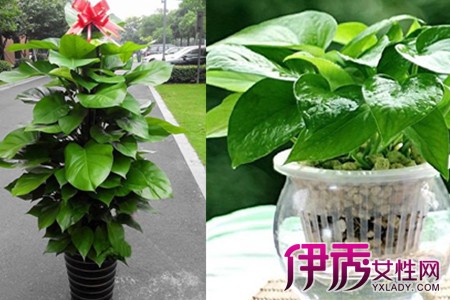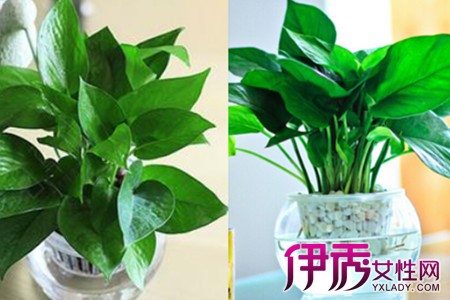The cultivation method of Anthurium andraeanum can produce healthy flowers by doing these three points.

Anthurium andraeanum gets its name because its leaves are fiery red, and it has other names, such as common andzu flowers, red crane taros, fire crane flowers, and candlestick flowers. Anthurium andraeanum is a beautiful flower, and many people want to know how to grow it. Here is how to plant Anthurium andraeanum.
Anthurium andraeanum is in a humid environment, so try to choose a wet place when planting. And the soil should be fertile, and some organic fertilizer can be added to lay the groundwork. In addition, the permeability of the soil should be kept good. The most suitable temperature for its growth is generally 16 to 24 degrees Celsius. The minimum cannot be less than twelve degrees.
The second thing to pay attention to is the amount of water of Anthurium andraeanum. Anthurium andraeanum is a kind of plant that likes humidity, so pay attention to the time of watering. If it is autumn and spring, it should be watered every three days. On the other hand, in the hot summer when there is a shortage of water, water should be watered every two days to ensure that the food will not dry up. Cold winter does not need too much water, watering too much is not conducive to the cold resistance of Anthurium andraeanum, so it can be watered every three to seven days.
All plants can not grow without the application of fertilizer. Similarly, Anthurium andraeanum should be fertilized frequently in order to maintain healthy growth. But the leaf of Anthurium andraeanum is special because it has a layer of wax on it, which covers the surface of the leaf, so that the leaf can not accept fertilizer directly. Then it can only be fertilized at the root.
The time and type of fertilization are also particular. For example, when Anthurium andraeanum is in the growing period, it is necessary to apply as much nitrogen fertilizer as possible. In late autumn and early winter, more phosphate and potash fertilizer should be added. Try to apply less fertilizer in winter, which is beneficial to Anthurium andraeanum for the winter. But it should be noted that after applying fertilizer, you should wipe off the fertilizer stuck to the leaves, because the fertilizer will burn the leaves.
How to water Anthurium andraeanum to grasp the three points is very important
The red palm is like an outstretched red palm, with a small golden ear of flesh erected on the palm, which is particularly eye-catching. So how to raise Anthurium andraeanum? How to water Anthurium andraeanum? You will know after reading the following article.
How to water Anthurium andraeanum?
In order to raise Anthurium andraeanum well, we must pay attention to watering. Improper watering can easily cause the withering or rotten roots of Anthurium andraeanum, affect the normal growth of Anthurium andraeanum, and in serious cases, it will cause the death of the plant.
1. Water quality selection: Anthurium andraeanum is a kind of flower species which is sensitive to salt. therefore, the pH value of the substrate should be controlled between 5.2 and 6.1 as far as possible, which is the most suitable for the growth of Anthurium andraeanum. If the pH value is too small, the flower stem becomes shorter, it will reduce the ornamental value. Tap water is suitable for planting Anthurium andraeanum, but the price is expensive; natural Rain Water is the best water source in Anthurium andraeanum cultivation.
2. Watering requirements: potted Anthurium andraeanum has different water requirements at different growth and development stages. In the seedling stage, because the root system of the plant is weak, it is distributed shallowly in the substrate and is not tolerant to drought. After planting, you should spray water 2-3 times a day, always keep the matrix moist, promote its early hair to draw more new roots, and pay attention to the dry humidity of the basin substrate. In the middle and large seedling stage, the plant grows fast, needs more water, and the water supply must be sufficient; at flowering stage, watering should be reduced and phosphorus and potassium fertilizer should be increased to promote flowering.
3. Water temperature control: the water temperature of Anthurium andraeanum should be kept at about 15 ℃ (including the nutrient solution), especially in severe cold and heat. The moisture in the medium should not be too wet, because the root of Anthurium andraeanum is semi-fleshy, and there is a large amount of water stored in the body. Too much water in the medium causes hypoxia in the medium, hinders the breathing of the root system, and is in a wet state for a long time, which will cause the root system to rot.
2. Culture methods and matters needing attention of Anthurium andraeanum
1. Humidity
Anthurium andraeanum needs about 70% air humidity for normal growth, which is generally difficult to achieve in ordinary family farming. You can use clean wet towels to wet the leaves several times a day, or spray water around the plant regularly to increase air humidity. (but do not sprinkle the flowers with water, so as not to affect the ornamental quality.)
2. Watering and fertilizing
Under normal growth conditions, dry wetlands can be seen to water the cultivated soil every week. Generally grasp the principle that the soil surface is not dry or irrigated, and the soil surface is thoroughly watered. The watering times and amount of water can be reduced appropriately in spring, autumn and winter. 7-8% special nutrient solution or 500 times diluted fertilizer water should be applied with watering every half month.
3. Pruning
In general, during the growth of Anthurium andraeanum, the basal petiole degenerates gradually, and the stipules can be cut off in time when the stipules become dry. When the pedicel turns yellow after anthesis, it should also be cut off from the protective post of 2 cm at the base as soon as possible.
4. Temperature
For family breeding of Anthurium andraeanum, the temperature should be guaranteed as much as possible. The optimum growth temperature of Anthurium andraeanum is 16-24 ℃, and the lowest temperature should be above 12 ℃. If ordinary families have heating facilities, this condition is easy to achieve. But at the same time, it must be noted that the flowerpot should not be placed on or too close to the radiator. When the summer temperature exceeds 30 ℃, the flowers should be moved to a ventilated room opposite to the north, and water can be sprayed around the plants to cool down.
5. Lighting
The normal growth of Anthurium andraeanum should have sufficient scattered light, and family culture should generally pay attention to: avoid strong light directly on leaves and flowers in summer, and move to the vicinity of the window in autumn and winter to increase light. It is also necessary to rotate the plant regularly to ensure that it receives uniform light and promote the perfection of its crown shape.
- Prev

Green pineapple how to cuttage simple steps to teach you
Green pineapple grows in the tropics, with strong entanglement, developed air roots and indomitable vitality. It has ornamental value and environmental protection value, also known as the "flower of life", but also represents the "happiness of keeping watch". Green pineapple cultivation is very simple, but soil culture can be hydroponic culture.
- Next

The method of hydroponic culture of green turnip can grow luxuriantly in water.
Green pineapple is a plant that everyone is very familiar with, and many people will raise it in the soil. In fact, green pineapple can also be cultivated very well in water. But do you know the way to grow green pineapple in water? The editor will share the method of hydroponic culture of green pineapple today.
Related
- Fuxing push coffee new agricultural production and marketing class: lack of small-scale processing plants
- Jujube rice field leisure farm deep ploughing Yilan for five years to create a space for organic food and play
- Nongyu Farm-A trial of organic papaya for brave women with advanced technology
- Four points for attention in the prevention and control of diseases and insect pests of edible fungi
- How to add nutrient solution to Edible Fungi
- Is there any good way to control edible fungus mites?
- Open Inoculation Technology of Edible Fungi
- Is there any clever way to use fertilizer for edible fungus in winter?
- What agents are used to kill the pathogens of edible fungi in the mushroom shed?
- Rapid drying of Edible Fungi

